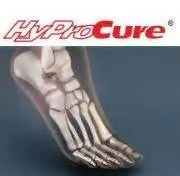What to Know About a Broken Toe
Although most people try to avoid foot trauma such as banging, stubbing, or dropping heavy objects on their feet, the unfortunate fact is that it is a common occurrence. Given the fact that toes are positioned in front of the feet, they typically sustain the brunt of such trauma. When trauma occurs to a toe, the result can be a painful break (fracture). Another type of trauma that can break a toe is repeated activity that places stress on the toe for prolonged periods of time.
Broken toes can be categorized as either minor or severe fractures. Symptoms of minor toe fractures include throbbing pain, swelling, bruising on the skin and toenail, and the inability to move the toe with ease. Severe toe fractures require medical attention and are indicated when the broken toe appears crooked or disfigured, when there is tingling or numbness in the toe, when the injured person experiences fever or chills throughout their body, and when there is an open, bleeding wound present on the toe.
Generally, a minor toe break will heal without long-term complications, but it is important to discontinue activities that put pressure on the toe. It is best to stay off of the injured toe with the affected foot elevated on pillows. Swelling can be alleviated by placing an ice pack on the broken toe for 15 minutes every two hours during the first two days after the fracture. The broken toe should be immobilized by placing a small cotton ball between the injured toe and the toe beside it, then taping the two toes together with medical tape.
Severe toe fractures may be treated with a splint, cast, and in some cases, minor surgery; especially when the big toe has been broken. Due to its position and the pressure it endures with daily activity, future complications can occur if the big toe is not properly treated. Pain associated with minor toe fractures can be managed with over-the-counter pain medications, and prescription pain killers may be necessary for severe toe fractures.
The healing time for a broken toe is approximately four to six weeks. In severe cases where the toe becomes infected or requires surgery, healing time can take up to eight weeks or more. While complications associated with a broken toe are immediately apparent, it is important to note that there are rare cases when additional complications, such as osteoarthritis, can develop over time.
Heel Pain
Heel pain is a stressful condition that effects day to day activities. Running and walking causes stress on the heel because the heel is the part of the foot that hits the ground first. This means that the heel is taking on your entire weight. Diagnosis and treatments for heel pain can be easily found through your podiatrist.
One of the main causes of heel pain is a condition known as plantar fasciitis. The plantar fascia is a band of tissue that extends along the bottom of the foot, from the toe to the bottom of the heel. A rip or tear in this ligament can cause inflammation of these tissues, resulting in heel pain. People who do not wear proper fitting shoes are often at risk of developing problems such as plantar fasciitis. Unnecessary stress from ill fitting shoes, weight change, excessive running, and wearing non-supportive shoes on hard surfaces are all causes of plantar fasciitis.
Achilles tendonitis is another cause of heel pain. Similar to plantar fasciitis, inflammation of the Achilles tendon will cause heel pain due to stress fractures and muscle tearing. A lack of flexibility of the ankle and heel is an indicator of Achilles tendonitis. If left untreated, this condition can lead to plantar fasciitis and cause even more pain on your heel.
A third cause of heel pain is a heel spur. A heel spur occurs when the tissues of the plantar fascia undergo a great deal of stress, leading to a separation of the ligament from the heel bone entirely. This results in a pointed fragment of bone on the ball of the foot, known as a heel spur.
Treatments for heel pain are easy and effective as long as problems are addressed quickly. The most common solution is simply taking stress off the feet, particularly off of the heel. This will ease the pain and allow the tendons and ligaments to relax. In the case of both plantar fasciitis and Achilles tendonitis, icing will reduce swelling of any part of the foot and anti-inflammatory medication is highly recommended. Properly fitting your shoes and wearing heel pads or comfort insoles will also reduce the risk of developing heel pain. Stretching before and after exercises such as running will help the foot muscles prepare for stress and lower the chances of inflammatory pain. In extreme cases, relieving heel pain might require surgery. Always make sure to discuss these symptoms and treatment options with your podiatrist to keep yourself active and pain free.
Working on Your Feet
Overworking your feet can put stress on your entire body, so taking care of your feet is an absolute priority for overall good health. Standing all day can cause a myriad of different conditions such as bunions, callouses, and plantar warts. These conditions are all very painful but can be avoided with proper foot care, which includes both proper posture and good shoe choices to contribute to the overall health of your feet.
A good place to start is choosing a show that has a negative heel which places the heel slightly lower than the ball of the foot, as shoes designed this way are best for your foot health. Having a job that keeps you on your feet all day makes it an especially a good idea to spend the extra money on a good pair of shoes. And most definitely purchase your shoes from a reputable manufacturer who puts foot health at the forefront of their goals. Having a job that keeps you on your feet all day makes it an especially a good idea to spend the extra money on a good pair of shoes.
The feet were not designed to be enclosed for hours on end. In fact, incorporating some "barefoot" time into your daily routine is not a bad idea to improve overall foot health. There are some other simple things that you can do to help alleviate pain and pressure on the feet from standing all day.
One of the first things you can do is perform some simple foot exercises and some common yoga moves to improve the function of your feet. Foot work outs that aid in your movement will stimulate blood flow and muscles of your feet. Yoga exercises that stretch your feet out flat on the floor can be very beneficial for you if you work on your feet all day. It can also help stretch and relax the calf muscles and Achilles tendon, both of which can become problem areas if not taken care of. You can perform these exercises every day during your daily routine, at the office, at the gym, or even before you go to bed simply stretching your feet out can do wonders for your foot health.
Foot pain that occurs every day because you work for long hours on your feet may lead you to think that this pain is inevitable. However, it does not have to be. Foot stretches and proper footwear work well in alleviating foot pain and preventing further foot problems.
With a little effort and some education, you can keep your feet healthy and feeling good. If your feet hurt, your whole body will eventually feel the effects over time. Start taking care of your feet today!
Getting the Right Shoe Size: To Keep Your Feet Happy
People are constantly wearing the wrong fitting shoes. Though it isn’t hard, picking the right shoes does require keeping a few things in mind.
Shoe stores have rulers, so you can get an exact measurement of your feet. Always measure your feet with shoes on, because measuring just your foot will give you a shoe size that is 1-2 inches too small for picking the right size shoe.
To ensure that your toes won’t be cramped, make sure there is wiggle room. Approximately one inch should be between your toes and the tip of your shoe. It is easy to tell if your shoes are too tight, because you will start to experience pain, blisters, and swelling.
Additionally, do not always assume your shoe size will be the same at every store. Manufacturers sometimes run differently, and your shoe size will vary. Make sure the stores your purchase from have return policies, incase there is a problem.
Rather than shoe shopping in the morning, it is advised to shop for shoes later in the day, since your feet are swelled. If shoes are purchased in the morning, they may not be as snug as they should be. Furthermore, not all two feet are the same size; therefore, accommodations may be necessary.
An overall big concern in buying shoes is making sure they are comfortable and supportive. There is not such thing as a shoe being ‘broken in’. If they are uncomfortable at the store, they likely will always be uncomfortable.
Since we do a lot of walking, it is important that we pick the right shoes. Our feel will only benefit from this, and we will be happier and healthier because of it.
Bunions
The term bunion refers to an enlargement of the base joint of the toe, the connection to the foot. This enlargement may be formed of swollen tissue or a bony growth, and is caused by the shifting of the bones in the big toe inward, toward the other toes of the foot. The area around the base of the big toe may become inflamed, red, and painful.
Genetic factors are important in the formation of bunions – people who get bunions are usually genetically predisposed to this bone displacement, and may cause its onset by wearing improperly fitting shoes, or by running or walking in a way that causes stress to the feet. Another common cause for bunions is wearing high heeled shoes. The weight of the body in these shoes pushes the toes into an unnatural position, possibly causing bone displacement.
A podiatrist who specializes in foot structure and bio-mechanics will be able to quickly diagnose bunions. Bunions must be distinguished from gout or arthritic conditions, so blood tests may be necessary. The podiatrist may order a radiological exam to provide an image of the bone structure. If the x-ray demonstrates an enlargement of the joint near the base of the toe and a shifting toward the smaller toes, this is indicative of a bunion.
Wearing wider shoes can remove the pressure on the bunion and reduce pain. High heeled shoes should be eliminated for a period of time as this type of shoe generally pushes the big toe outward toward the smaller toes. This may be enough to eliminate the pain associated with bunions; however, if pain persists, anti-inflammatory drugs may be prescribed. Severe pain may require an injection of steroids near the bunion. Orthotics for shoes may be prescribed which, by altering the pressure on the foot, can be helpful in reducing pain. These do not correct the problem, but by eliminating the pain, they can provide relief.
For cases that do not respond to these methods of treatment, surgery can be done to reposition the toe. A surgeon may do this by taking out a section of bone, or may rearrange the ligaments and tendons in the toe to help keep it properly aligned. It may be necessary even after surgery to wear more comfortable shoes that do not put undue pressure on the toe as the big toe can easily move back to its orientation toward the smaller toes.













